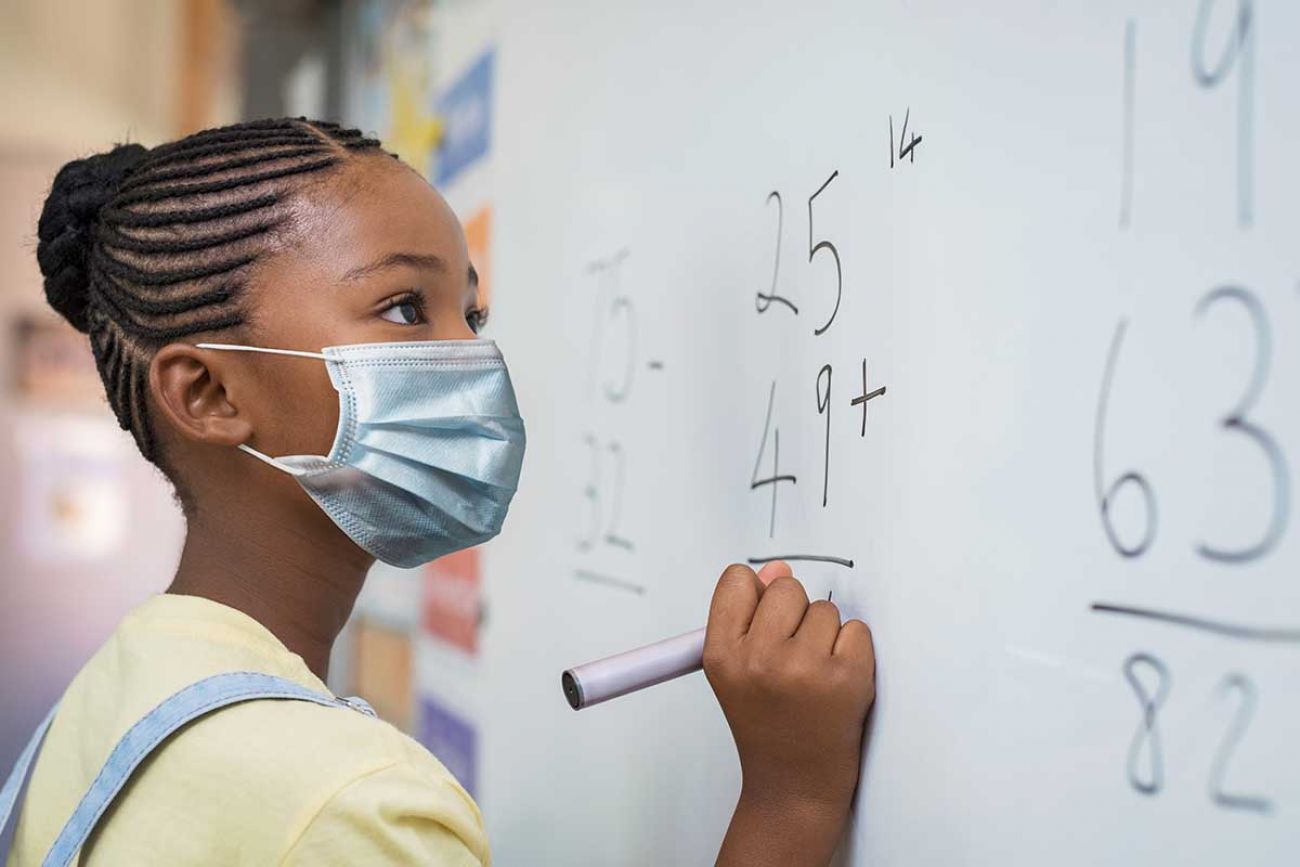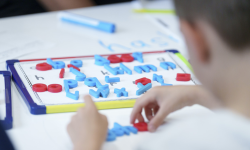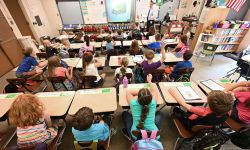COVID outbreaks in Michigan schools already 8 times higher than last year

Nov. 9: COVID shots for young kids adds confusion to Michigan school mask mandates
Nov. 3: Child COVID vaccines are available in Michigan. Now comes the hard part.
Oct. 22: They disagreed, but both caught hell. Welcome to Michigan’s mask mandate wars
Oct. 12: Michigan college COVID outbreaks plummet as students vaccinate and mask up
One month into the new school year, there are more than eight times more COVID cases connected to outbreaks among students and staff in Michigan schools than at the same point last year.
And that’s a conservative estimate, given that the state recently narrowed the definition of what constitutes an outbreak. Experts attribute the rise to more students in classrooms this fall, a lack of mask mandates across many districts and counties, and the more transmissible delta variant of COVID-19.
According to data released Monday, as of Sept. 30, there are 2,491 confirmed coronavirus cases connected to new and ongoing outbreaks in Michigan K-12 schools and pre-K centers. By comparison, there were 296 new and ongoing cases connected to school outbreaks as of Oct. 1, 2020.
Related:
- Sparrow nurses without contract say 'critically low' staffing puts patients at risk
- After 18 months: Welcome back, Canada, if you’re vaccinated
- Michigan ER patients left on stretchers, then recliners, in swamped wards
- Education levels drive Michigan vaccines. What’s rate in your neighborhood?
- First month of classes in Detroit sees virtual school challenges, demand for hourly employees continues
- Michigan counties dump mask rules for thousands of pupils amid budget mess
- Science says school masks work. Public opinion is another issue in Michigan
- Michigan will disclose fewer school COVID outbreaks under new rules
Certainly, those infections represent a tiny share of Michigan students. Those 2,491 kids who’ve tested positive represent 0.17 percent of all students, or about one in every 577 public school students.
Still, the jump in school outbreak cases mirrors a troubling rise in COVID cases and hospitalizations among Michigan residents under the age of 20.
And school outbreaks, which typically involve fewer than 10 students and staff, can affect many others who are asked to quarantine because of close contact with someone who tested positive. One example: An Ann Arbor elementary school retreated to fully remote learning this week when eight COVID cases led to 50 additional students who were quarantined.
In a more remote, four-county area in the eastern Upper Peninsula, the total number of COVID cases jumped from 221 in August to 710 in September, driven in part by school outbreaks, said Kerry Ott, spokesperson for the LMAS Health Department, which covers Luce, Mackinac, Alger and Schoolcraft counties.
That’s higher than a two-month period last year, when the counties had 685 total cases between Sept. 25 and Nov. 25, making this September among the worst months of the entire pandemic, Ott said.
At least three schools in the four-county region have turned to virtual learning. Each had been “mask optional,” even as some other schools have required masks, she said.
With the more transmissible delta variant that spread quickly this summer, “we’re not surprised” at the increase, she said.
Cases have jumped this year for several reasons, experts say.
Virtually all of the state’s K-12 students are back in school with a room full of classmates this fall, compared to between 36 percent and 57 percent of students who were learning in-person at least part of the time in September 2020. More students in close proximity to each other means more spread, said Katharine Strunk, director of Education Policy Innovation Collaborative at Michigan State University, which tracked in-person, hybrid and remote learning in the 2020-21 school year.
And those who were in class last year all were wearing masks. This year, about 60 percent of students are mandated to wear face coverings; in the rest of the state’s schools, where masks are encouraged but optional, only a small minority are wearing masks, according to school leaders interviewed by Bridge Michigan. The Centers for Disease Control and Prevention recently published a study showing that school districts without mask mandates were about 3.5 times more likely to have COVID-19 outbreaks.
Last week, mask mandates in place in some districts were dumped for thousands of Michigan students in the wake of anti-mandate language placed in a state budget bill.
No one should be surprised by the rising infections in schools, said Dr. Mark Hamed, an ER doctor in Michigan’s Thumb region, as well as a medical director for several of its counties.
“This time last year, we had mask mandates — that’s the game changer here,” he said.
Meanwhile, schools, businesses and other organizations have relaxed other safety protocols such as social distancing.
“Even quarantine seems optional now,” Hamed said. “We’re getting resistance from school boards in enforcing that. It’s like a perfect combination. You have a more contagious variant, more relaxed rules, and no masking. So (is the increase in school outbreaks) expected? Yes, you could say that.”
While some parents and lawmakers have protested requirements, recent studies show that mask mandates decrease the spread of the coronavirus in schools.
“I’m so frustrated,” said Owen Goslin, a parent in Cheboygan Area Schools, where his daughter’s school, East Elementary, announced Monday that it will close for the rest of the week because too many teachers are out ill. The district does not have a mask mandate, and Goslin estimated that 5 percent of students regularly wear masks.
“It was so predictable,” Goslin said of the closing. “People were acting like COVID was all over when clearly it’s not; when all the science and recommendations are, if we wear masks, we won’t be in this situation nearly as bad.”
State officials noted the worrisome uptick in school-related cases in the past week as part of a routine data report. In one week, 105 new outbreaks were reported in K-12 settings, dwarfing the 20 new outbreaks in long-term care settings, such as nursing homes — the sites of wildfire-like, deadly COVID spread last year.
In all, the state was monitoring 289 new and ongoing outbreaks in K-12 settings, representing 45 percent of all outbreaks. Outbreaks last school year were defined as two or more linked cases; under a recent change by the national Council of State and Territorial epidemiologists and adopted by the state health department, outbreaks are now defined as three or more linked cases.
Compared to older residents, especially those in long-term care, most children will survive a COVID infection just fine, Hamed noted. On Monday, Michigan’s hospitals were treating 1,825 people for suspected or confirmed COVID infections; just 43 were pediatric patients, or 17 years old or younger.
But still unclear is how many children — even those with just moderate COVID symptoms to start — may face lingering symptoms for weeks or months longer. One early study published last month suggested that 1-in-7 children or more will have lingering COVID symptoms. However, the study, in England, was small and is not yet peer-reviewed.
“We just really don’t know,” Hamed said.
His more immediate concern is that even asymptomatic children with COVID are “vectors to the immunocompromised and to the elderly with underlying conditions.”
Infections are rising among Michigan’s youngest population, with those under 20 comprising 28 percent of the more than 103,000 cases statewide since Sept. 1.
But the biggest jump was among those under age 10, who are not yet eligible for any of three approved coronavirus vaccines. In September they made up 9.2 percent of all cases, double their percentage prior to September.
A year ago, when many schools opted for remote learning, those under 20 comprised 20 percent of September cases and those under 10 percent were just 3 percent of all cases.
Dr. Matthew Hornik, an Oakland County pediatrician, said his office sees at least one child a day now with COVID, adding to the increasing caseloads of children with RSV (respiratory syncytial virus) and other respiratory diseases, which also are on the increase.
"Most of the practices in our area — we're all filling up by 10 o'clock," he said, referring to worried parents whose children become sick after-hours.
With COVID, "most of these kids will be just fine, but I can think of a couple of my patients right now that are still dealing with those long COVID symptoms — excessive fatigue, fevers, dizziness,” said Hornik, who also is president of the Michigan chapter of the American Academy of Pediatrics.
Without vaccines or universal masking, “these kids — that 5- to 11-year group — are the path of least resistance right now for the virus," he said.
A vaccine for 5 to 11-year-olds moved closer to reality last month when Pfizer announced clinical trial results among 2,268 children that showed the vaccine is 95 percent effective among that age group. As it stands now, COVID vaccines are available only to U.S. children aged 12 and older.
Michigan Education Watch
Michigan Education Watch is made possible by generous financial support from:
Subscribe to Michigan Education Watch
See what new members are saying about why they donated to Bridge Michigan:
- “In order for this information to be accurate and unbiased it must be underwritten by its readers, not by special interests.” - Larry S.
- “Not many other media sources report on the topics Bridge does.” - Susan B.
- “Your journalism is outstanding and rare these days.” - Mark S.
If you want to ensure the future of nonpartisan, nonprofit Michigan journalism, please become a member today. You, too, will be asked why you donated and maybe we'll feature your quote next time!






